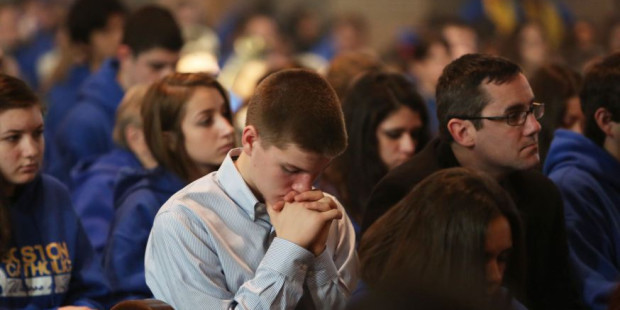Over the last 20 years or so, I’ve noticed that many with a vocation to priesthood have headed for religious communities like the Dominicans or Franciscans rather than diocesan life. Mothers have expressed their relief that this was their sons’ choice, rather than what they perceived as the loneliness of diocesan life. I’ve often wondered if religious life turned out to be as supportive as these young men had hoped.
It seems strange to me that those with vocations forget that the basic (and I would say best) religious community is the parish. This fundamental Church structure is where it all happens. Religious communities, deprived of the messiness of human life, seen especially at baptisms, anniversaries and marriages, can sometimes seem a little sterile and falsely perfect to those of us who work in parish life.
Organism
The parish is an organism that Irish people instinctively ‘get’. We Irish want to know the people around us, we bond through social occasions and we pull together in sad times.
If you live in an Irish parish, particularly a rural parish, it’s important that you know the people around you, and that you let yourself be known. High walls and electronic barriers aren’t acceptable, unless you want to be known as “that odd crowd with the gates”. We may need our neighbours; they may need us.
Local social occasions help us to get to know each other better. Being part of the parish GAA club (in those lucky parishes where there is only one) and supporting the parish team is a key part of parish life.
Funerals best express what parish life is to Irish people, because if you are part of a parish, you have to turn up for a funeral. Knowledge of the person who has died or closeness to their family might be reasons for funeral attendance elsewhere: in Ireland, membership of the same parish is enough. At funeral times, Irish parishes come into their own.
Good animator
Of course, a priest isn’t the only one who could draw parishioners into unity. A social worker could make a good animator, as could a committed local teacher or a Garda. But the one who presides over the major parish gathering in the church has a key role (currently the local priest).
There he sees before him those known to him from sad times, as well as participants in happy occasions. Meeting people in the yard after Mass, or in the shop, or on the road, the priest is a central part of a significant religious community.
Perhaps in the past, the priest confined to his parochial house and protected by his housekeeper was an isolated figure, but not now. Parish life stimulates, supports and satisfies priests. It’s sad that clustering parishes together could deprive priests of their community and risk turning them into sacrament-dispensing machines. Priests need to be part of a community. Religious communities can attract for that very reason, But the Church’s best community is the parish: a thought from Vocations Sunday.
You may be wondering who I am and where I live. I was born in Dunmanway, where Sam Maguire (of All-Ireland fame) was born and is buried. Since being ordained for Cork & Ross diocese in 1984, I’ve worked in seven parishes, including Newcestown, my current one. I enjoy writing, reading and preaching, most Sundays anyway (except when the Gospel is hard to make sense of!). I love parish life. And just last year I co-wrote with Diana Klein a little book called How to Survive Working in a Catholic Parish (Redemptorist Publications). I am still trying to figure that out…
STORIES FROM PARISH LIFE: One of the most challenging feats for a priest in a parish is in hiding a smile when someone says something inappropriate at a solemn moment. First Friday calls often make me want to smile. Many years ago, when apparitions in Medjugorje were first reported, it proved a very hard placename to pronounce. A lady on my ‘rounds’ received a Rosary as a souvenir from a relative who had gone on pilgrimage there. And she reported faithfully that the beautiful Rosary in her hands came…. “all the way from MEDIOCRE”.



